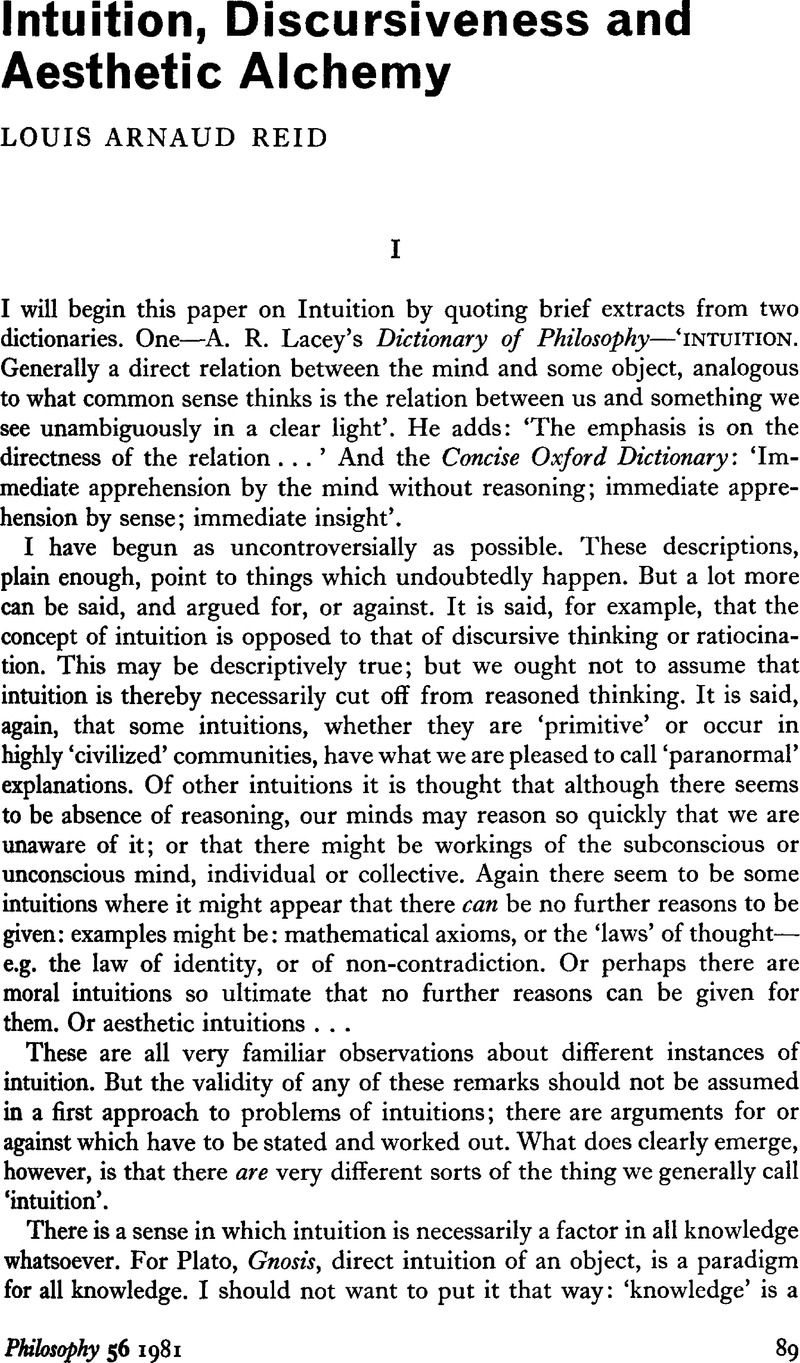Article contents
Intuition, Discursiveness and Aesthetic Alchemy
Published online by Cambridge University Press: 30 January 2009
Abstract

- Type
- Discussion
- Information
- Copyright
- Copyright © The Royal Institute of Philosophy 1981
References
1 On ‘Feeling as cognitive’, see Reid, Louis Arnaud, Meaning in the Arts (London: Allen & Unwin, 1969), 143–150Google Scholar. Also Chapter IX and passim. Also Reid, , ‘Feeling, Thinking, Knowing’, Proceedings of the Aristotelian Society (1976–1977), 165–182Google Scholar.
2 On ‘Embodiment’, see Reid, Meaning in the Arts, 75–82, and passim.
3 I say ‘prima facie’ because I am not suggesting that these immediate aesthetic intuitions do not have their associational or other psychological and cultural background and causes.
4 Moore, Henry, in Henry Moore Sculpture (London: Macdonald, 1966)Google Scholar.
5 Ibid.
6 Ibid., 57.
7 Ibid., 50.
8 Ibid., 68.
9 Bosanquet, , Three Lectures on Aesthetic (London: Macmillan, 1915)Google Scholar.
- 2
- Cited by


